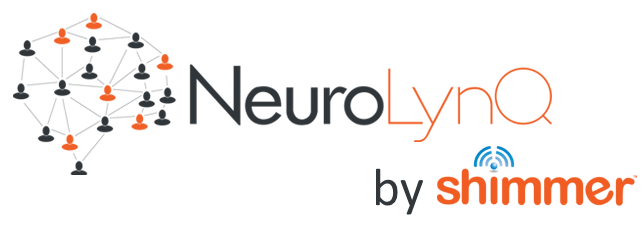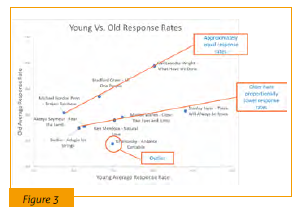Measuring Emotional Responses to a Live Concert
Context matters. Watching a sporting event after the fact, when you know the outcome, is an entirely different experience to watching it live. The smell of lemon-scented ammonia can be quite refreshing when walking into a freshly cleaned kitchen, but it is not nearly so nice on your food. Palaver Strings, the Music Ensemble in Residence at the Boston Center for the Arts (BCA), believes in the importance of context and is dedicated to engaging new and diverse audiences in personal, unconventional settings.
Palaver wanted to evaluate its approach scientifically by monitoring a live performance and enlisted Shimmer Research, Inc. to perform the study. We chose to monitor the “Lifesongs” concert performed in the BCA’s Black Box Theater. The original songs in this concert were collaborations between Palaver Strings and the performers who were elders in the LGBTQ community. Shimmer’s NeuroLynQ system collected galvanic skin responses (GSR) from the participants – both audience members and performers – and measured their psychological arousal continuously during the performance.
None of the participants were pre-recruited. Instead, we announced 10 minutes prior to the start of the show that we were looking for volunteers to participate in this study. We reached our target of 30 people in approximately six minutes. Once that was done, we showed the volunteers how to put on the sensors, checked the signals, and were up and running in four minutes.
Response Rates Achieved Super Bowl Levels
By any measure, the concert was very well received. From a self-report perspective, respondents gave it a 9.3 out of a maximum of 10. This high level of response was also reflected in the biometrics. Based on the NeuroLynQ metrics, the music evoked a response from 38% of the audience at any given time (1). This was the same level of response generated by an audience watching the most recent Super Bowl (2). Furthermore, the instantaneous response rate for the performance equaled or exceeded the peak response rate for a touchdown in the Super Bowl on numerous occasions. This result proves that Palaver’s performance approach does, in fact, generate high levels of response – beyond what many people might have thought possible for a classical music concert.
Other Findings
NeuroLynQ captured data on a moment-by-moment basis for the entire concert, allowing Shimmer and Palaver to conduct a number of analyses on the results. Figure 1 shows the normalized GSR level throughout the concert (3). We see several interesting trends.
The most striking trend is the peaks between the songs. It turns out that clapping and cheering was the most arousing part of the concert – likely because everyone’s response was amplified by the responses of the people around them. In comparison, listening to the music was comparatively relaxing and the GSR levels declined through every song. The group effect reinforces the positive audience response and is one of the many benefits of the small, intimate live concerts that Palaver performs.
Performers and the Audience had Similar Responses
The performers’ (orange) and audience’s (blue) responses were remarkably similar. This may not be entirely surprising because the performers did not perform until the last song, so for most of the concert they were audience members. More interesting is the fact that the audience’s GSR levels increased slightly over the course of the concert whereas the performers’ levels decreased slightly.
Anticipation of Performing is More Stressful than Performing
One might expect that the performers’ arousal would increase as their portion of the concert neared. In fact, the reverse happened, although there was a sharp increase right before their song occurred. From this, we infer that the anticipation of a performance is more nerve racking than the actual performance. Furthermore, that effect does not seem to increase as the performance gets closer. If anything, it may diminish. The performers’ levels at the start of the performance were higher than right before their song. There was another spike just before they started singing, but it was the smallest of the three.
Men had Higher Responses than Women
Overall, men had a much higher response rate than women, responding on average 40% of the time versus 33% of the time for women. However, their relative response rates lined up very closely with the exception of one outlier (Figure 2). The main difference in the outlier (“All One People”) was that the response rate for men was very high when the performer was singing about conversations he had with his mother. In contrast, women had a low response rate, indicating that this portion of the song resonated more strongly with men. Age Differences are More Pronounced than Gender.
Differences
We thought that the songs might resonate more strongly with older audience members (who were contemporaries of the composers) than younger audience members. Overall, the reverse was true with younger members responding 36% of the time and older ones responding 31%. The average differences probably reflect younger people being more emotional on average. However, when we look at the results for individual songs (Figure 3), the results are not nearly as aligned as the results for gender. Although we noticed that younger people tended to respond more to the music volume and older people responded more to upbeat tempo, these factors do not explain why three songs stood out for the older audience. It seems likely that the themes in the lyrics created the higher response rates for the older audience rather than the music itself.
Results
Using Shimmer’s NeuroLynQ system, Palaver Strings was able to demonstrate the high levels of response its approach generates. Younger people and men – who are not the typical consumers of classical music – had even higher response rates than average. Palaver is using this information in grant applications and other marketing efforts. The detailed analyses also offered valuable insights that Palaver can incorporate into future concerts and community collaborations. For example, the study highlighted the importance of storytelling to build a connection with the audience. Music can also be selected to optimize tempo and volume for different audiences. Palaver is incorporating these findings into its future program development.
References
1 For a description of these metrics, see Dandu, Gill, and Siefert, “Quantifying Emotional Responses of Viewers based on Physiological Signals”, available here.
2 See description of the Shimmer Ipsos Super Bowl project here.
3 Normalized GSR is calculated by subtracting each individual’s mean GSR level for the whole experience from their actual GSR level for every point in time, then dividing that by the standard deviation of their GSR level. The result is then averaged across all individuals at every point in time to get an average z-score.
Produced with permission from Neuromarketing Science & Business Association (www.nmsba.com)





